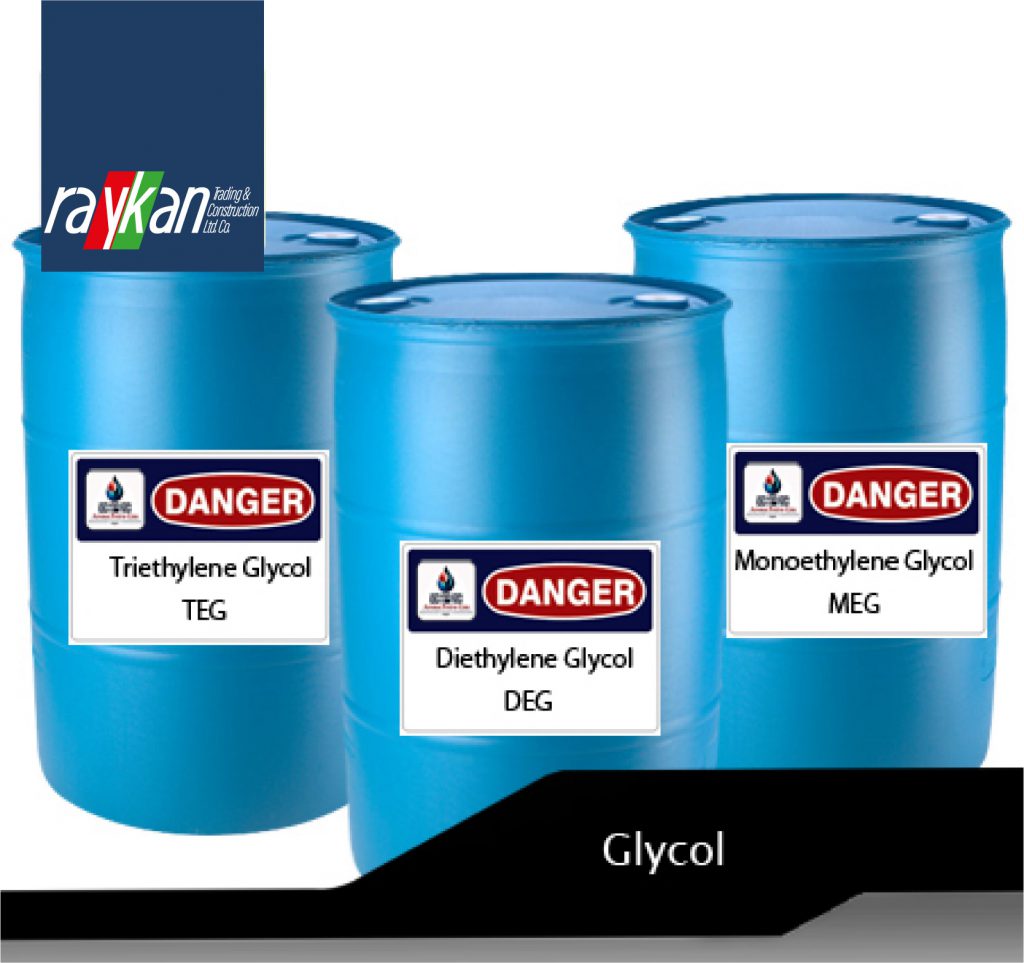
Rate Enquiry
GLYCOLMEG
MEG obtained from the reaction of ethylene oxide and water. It is a clear, transparent and odorless liquid that can be mixed with water in any proportion.
Applications:
Polyester: Polyester fibres, threads, films and polyester resins are produced from the reaction between MONOETHYLENEGLYCOL with dibasic acids and their esters and it is used in the synthesis of PET.
Resins: MONOETHYLENEGLYCOL acts as coalescence and anti-freezing agent in emulsified resins
Wetting and plasticizing agents: MONOETHYLENEGLYCOL can be used as a wetting and plasticizing agent in the production of cellophane, glues and adhesives, textiles, printing ink, leather, cosmetics, paper and pharmaceutical products.
Coolant additives: MONOETHYLENEGLYCOL is used in industrial refrigeration circuits and internal combustion engine coolant systems with the purpose of raising the boiling point and reducing the freezing point of the solution used
It can also used in the formulation of printing ink, in the treatment of gases, in the formulation of fire-resistant hydraulic fluids, cutting oils, surface polishers, agrochemicals, extraction of solvents, manufacture of pigmented pastes and putty for walls, and in the synthesis of explosives.
DEG
Diethylene glycol is similar to Ethylene Glycol in many respects but has a higher boiling point, viscosity and specific gravity – as might be predicted from its higher molecular weight. Its properties are sufficiently different from those of ethylene glycol to make it a more desirable material in many applications.
Applications:
Worldwide, the largest use of DEG is as an intermediate in chemical syntheses. Diethylene glycol is used as a dehydrating agent for natural gas, a raw material for the production of plasticizers and polyester resins, a humectant, a textile lubricant and coupling agent, a solvent in textile dyeing and printing, a constituent of hydraulic fluids, a plasticizer for paper, cork and synthetic sponges, a solvent in printing inks, a raw material for the production of esters used as emulsifiers, demulsifiers, and lubricants; a selective solvent for aromatics in petroleum refining.
It is also used as an anti-freeze agent, in cement grinding and agent in polymer and/or acrylic homopolymer emulsions, as a chain extender in the dispersion and as a wetting agent in unsaturated polyester resins. as a constituent of brake fluids, lacquers and cosmetics, and packaging materials and coatings.
TEG
Triethylene glycol is a member of a homologous series of dihydroxy alcohols. It is a colorless, odorless and stable liquid with high viscosity and a high boiling point. Apart from its use as a raw material in the manufacture and synthesis of other products, TEG is known for its hygroscopic quality and its ability to dehumidify fluids. This liquid is miscible with water, and at a pressure of 101.325 kPa has a boiling point of 286.5 degrees Celsius and a freezing point of -7 degrees C. It is also soluble in ethanol, acetone, acetic acid, glycerine, pyridine, aldehydes; slightly soluble in diethyl ether; and insoluble in oil, fat and most hydrocarbons.
Applications:
- Unsaturated Polyester Resins
- Lubricant and coupling agents
- Gas Dehydration and Treating
- Chemical Intermediates
- Heat Transfer Fluids
- Solvents for aromatics
- Plasticizers
- Raw material for the production of polyols
